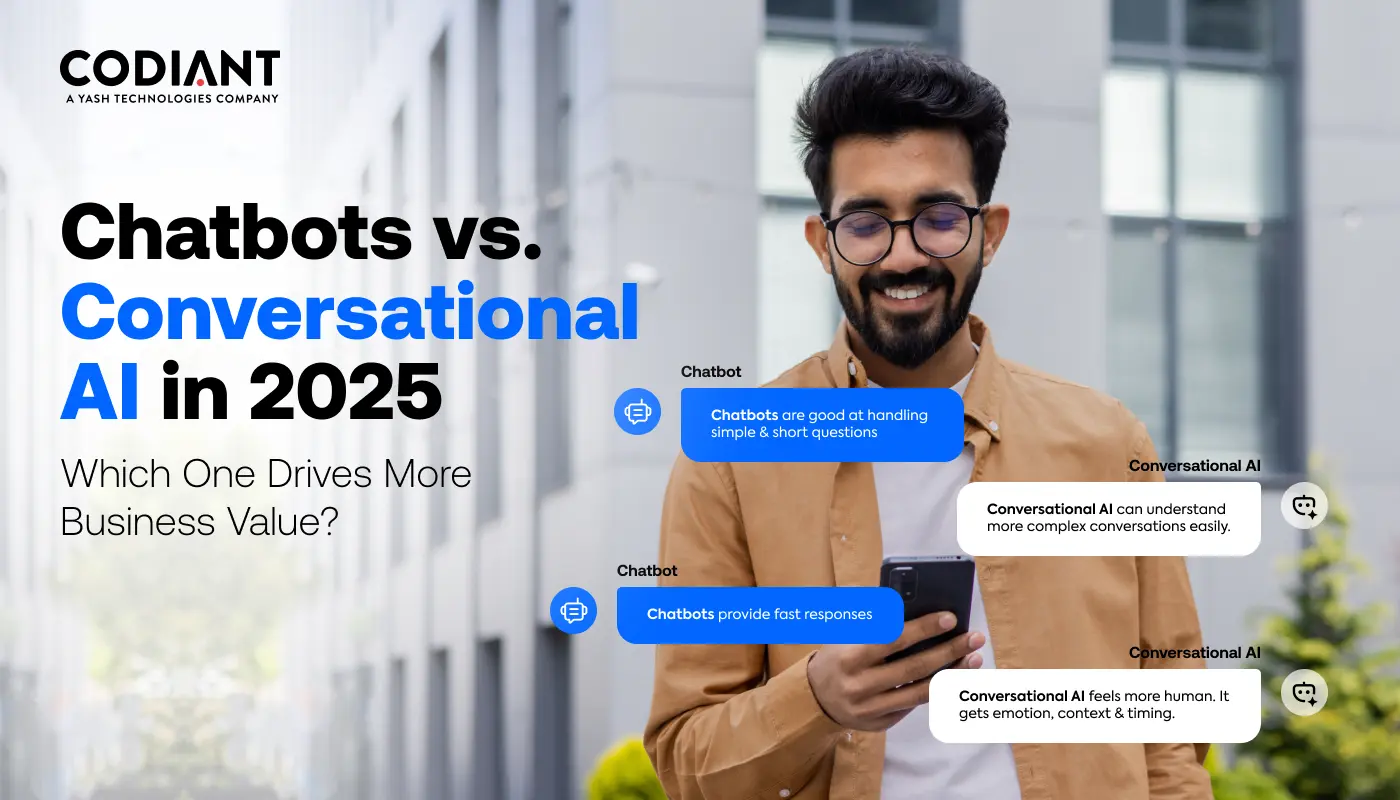Mistakes to Avoid While Developing a Fitness App
Table of Contents
Subscribe To Our Newsletter
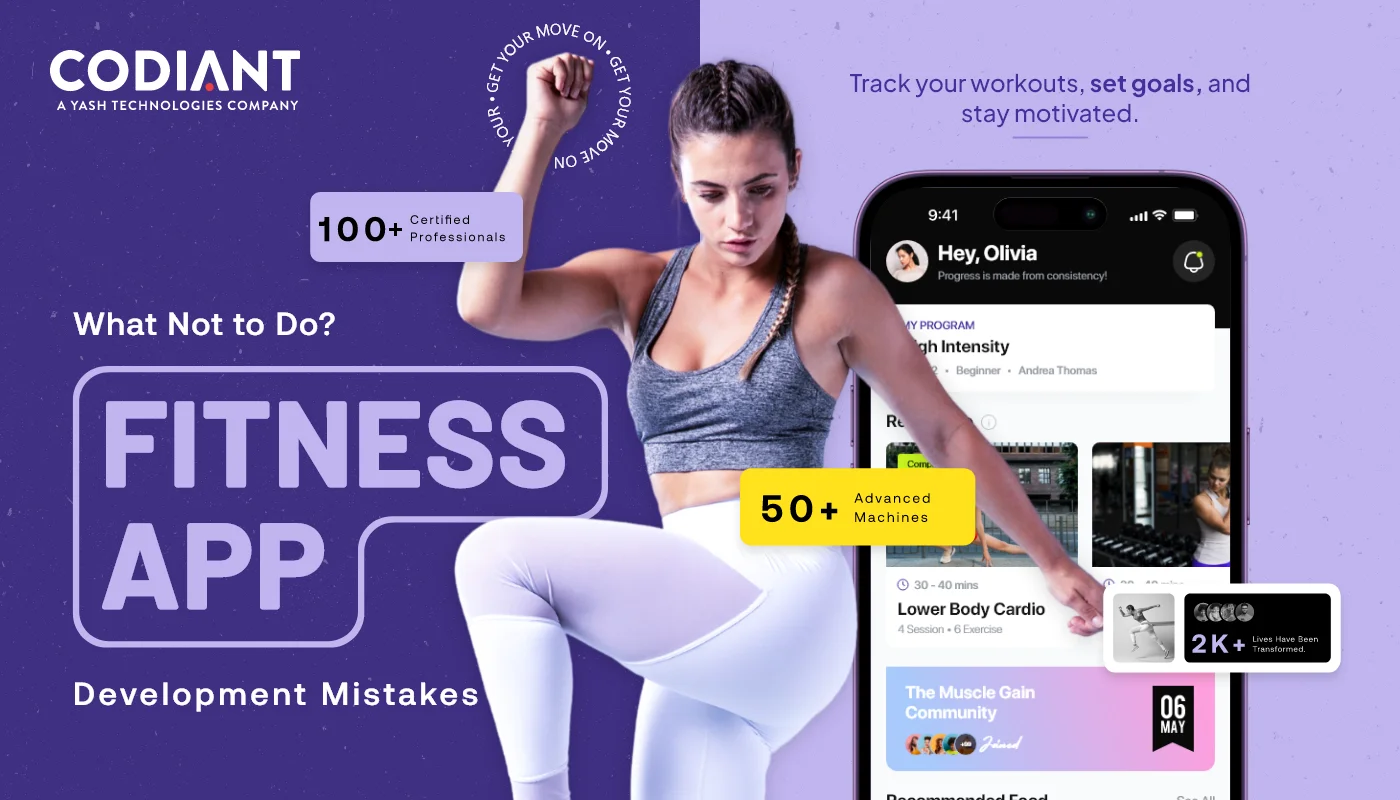
The fitness industry has undergone a major digital transformation. Nowadays, fitness apps have become more than just a trend—they’re a lifestyle companion. According to market research, the global fitness app market is projected to reach $14.64 billion by 2030, growing at a CAGR of over 23%. That’s no small gain.
With that kind of growth potential, it’s no surprise that more entrepreneurs and businesses are jumping in to build the next big fitness app. But with fierce competition comes the need for precision.
Launching an app thoughtlessly is like training without a plan—ineffective and risky. In this blog, we’ll walk you through the most common (and costly) mistakes developers make when creating fitness apps—and more importantly, how to avoid them so your product doesn’t just launch, but gains real traction.
The Rise of Fitness Apps
The popularity of smartphones and the growing interest in healthy living have come together to change the way we stay fit. Fitness apps now offer everything in one place—workout videos, step tracking, meal logging, meditation, and even one-on-one coaching. It’s like having a personal trainer and nutritionist right in your pocket.
People love the flexibility these apps bring, whether they’re working out at home, hitting the gym, or just going for a walk. Today, fitness apps aren’t just convenient—they’ve become a daily habit for millions seeking a healthier, more active lifestyle.
Fitness App Market Overview: Riding the Wave of Wellness
Health is wealth, and mobile users are investing in it more than ever. From on-demand workout videos and yoga sessions to AI-powered personal trainers, fitness apps are evolving rapidly to meet user needs. Here’s a quick snapshot of the market trends:
- Who’s downloading them?
Millennials and Gen Z lead the way, followed closely by busy professionals managing health alongside hectic schedules.
- What’s trending?
Mindfulness features, gamified fitness app challenges, integration with smart wearables, and personalized AI workout recommendations.
- Why it matters?
Understanding these trends helps you create an app that’s not only relevant today but remains competitive tomorrow.
Tap Into a $14.64B Opportunity—Before Someone Else Does
The fitness app market is exploding. With 23% annual growth, every second counts. Let Codiant fast-track your app from idea to market-ready success.
Know Your Audience Before You Develop Fitness App
Before writing a single line of code, ask: Who am I building this for?
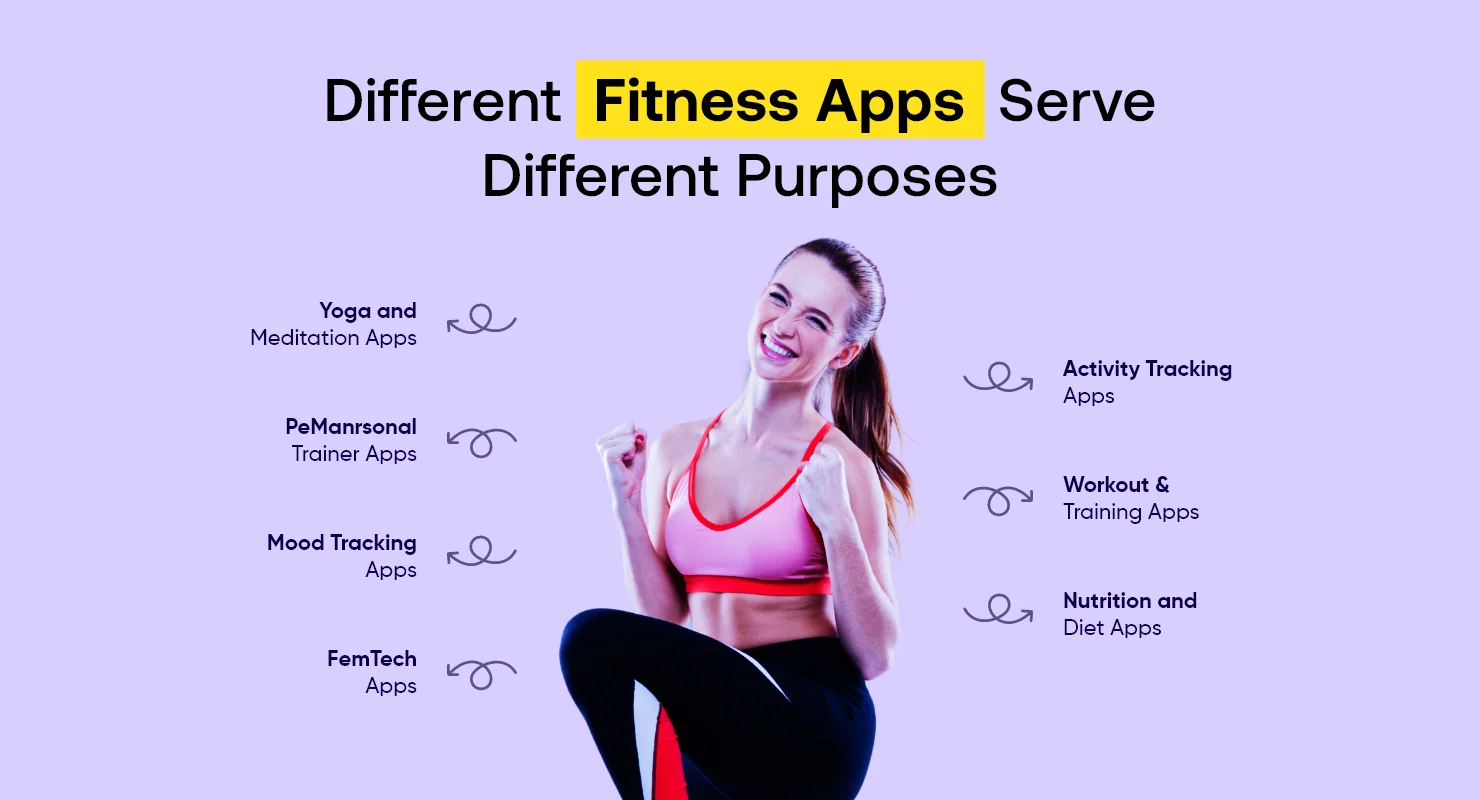
- Get Specific with Niche Targeting
Are you designing for gym-goers? New moms? Yoga enthusiasts? Senior citizens aiming to stay active? Each segment has distinct needs. Casting too wide a net can water down your app’s effectiveness.
Read Also: How Much Does It Cost to Develop a Yoga Mobile App
- Create Detailed User Personas
Think of your ideal user. What are their goals, pain points, and routines? Build profiles that reflect real people.
- Address the Pain Points
Maybe it’s lack of motivation, not enough time, or uncertainty about where to start. A good fitness app speaks directly to these frustrations.
Know Common Fitness App Mistakes to Save Thousands
If you’re planning to launch a fitness app, knowing what not to do is just as important as knowing what to build. Most apps fail not because of lack of features—but due to poor planning, confusing user experience, or missed market alignment. That’s why understanding common development mistakes is a game-changer.
Skipping market research, offering too many features too soon, ignoring user feedback, or neglecting performance testing can cost you time, money, and users. Imagine investing thousands, only to find out your app doesn’t solve a real problem—or worse, that users find it hard to use.
By learning from others’ mistakes, you can avoid the usual traps and focus on what truly matters—creating value for your users. At Codiant, we help clients sidestep these mistakes from day one, ensuring your app launches stronger, performs better, and scales faster. Smart choices for fitness app development today can lead to big wins tomorrow.
Top 8 Fitness App Development Mistakes & Solutions
Let’s dive deep into the critical errors that developers make—and how to course-correct.
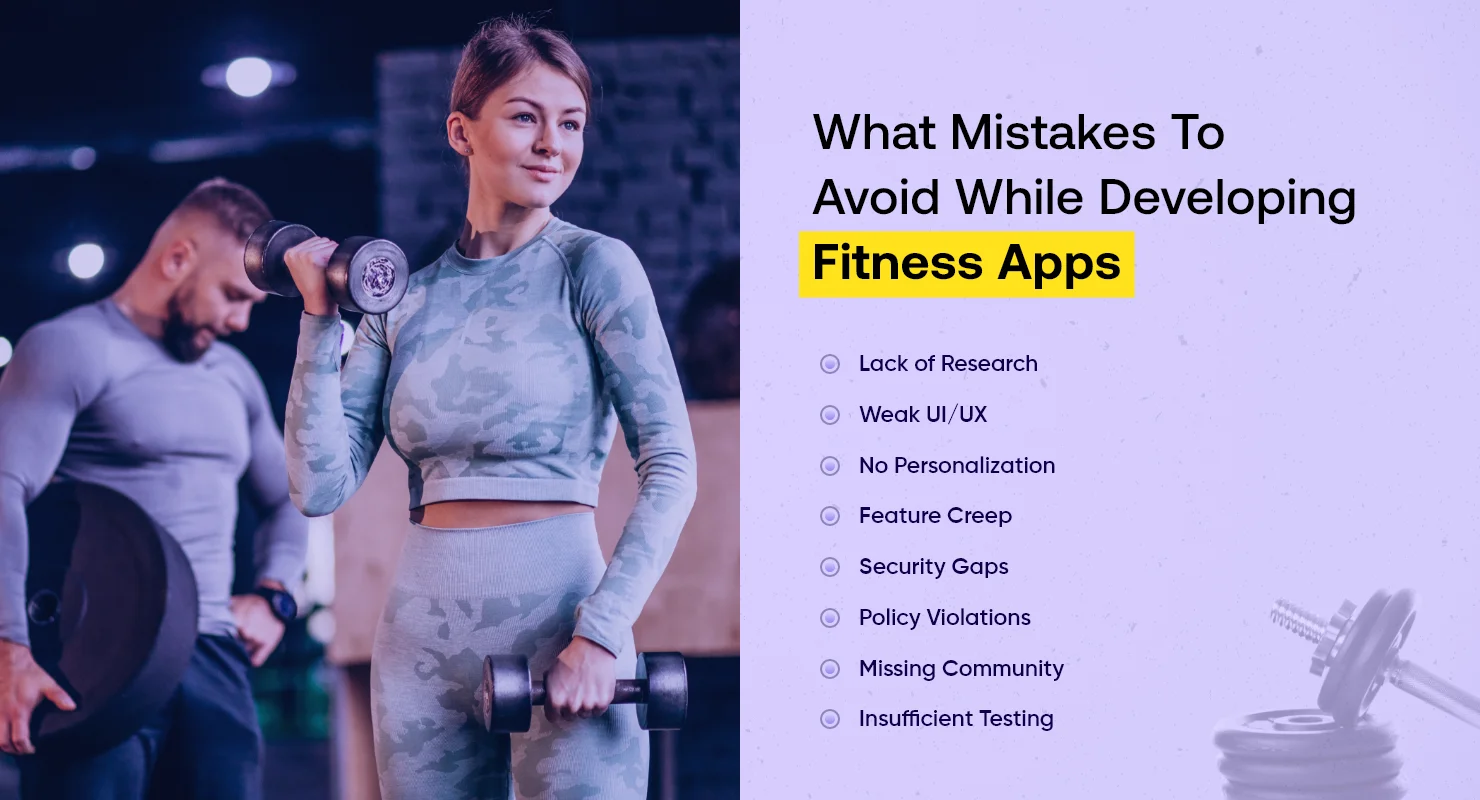
1. Market Research Gap: Know Your Segment
Jumping into development without validating your idea is like running a marathon blindfolded. This clears, skipping market research often leads to creating a “me-too” product—one that lacks unique value for fitness freaks.
What to Do Instead:
- Analyze top apps in your niche.
- Study user reviews to uncover pain points.
- Use tools like Google Trends and App Annie to spot rising interests.
2. UI/UX Neglect: Design for Engagement
If your app isn’t easy on the eyes and smooth to navigate, users will bounce—fast.
Pro Tips:
- Use intuitive design—think one-tap access to workouts.
- Avoid information overload.
- Design for both beginners and experienced users.
3. Lack of Personalization: Make It Their Own
A one-size-fits-all approach doesn’t cut it anymore.
What Users Want:
- Tailored workout plans
- AI-based recommendations
- Dynamic goal tracking
Why It Matters: Personalization boosts motivation and app retention. It’s the digital equivalent of having a personal trainer in your pocket.
4. Feature Overload: Less is Often More
Sure, it’s pretty much attractive to add every cool feature possible. But overloading your app can confuse users and dilute its core purpose.
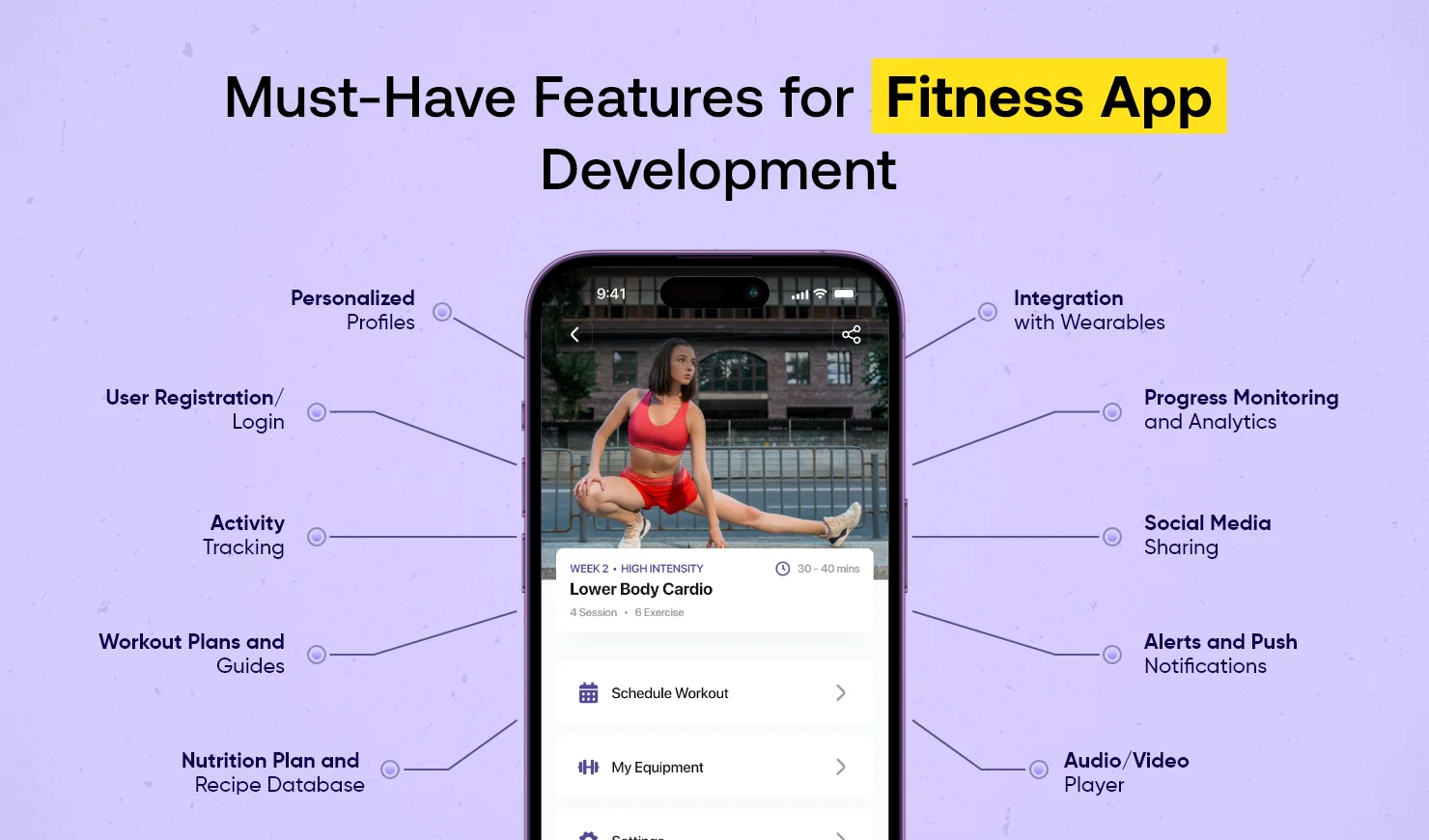
Solution:
- Focus on a Minimum Viable Product (MVP) first.
- Identify must-have vs. nice-to-have features.
- Introduce advanced features gradually post-launch.
5. Data Security Risks: Build Trust and Protection
Your users are sharing sensitive health data. That means trust is non-negotiable.
Best Practices:
- Use end-to-end encryption
- Ensure GDPR and HIPAA compliance
- Be transparent with privacy policies
6. Platform Guideline Violations: Play by the Rules
Apple and Google have strict guidelines for health and fitness apps. Ignoring them can result in rejection—or worse, removal.
Tips:
- Stay updated on App Store and Google Play Store policies
- Test extensively for Android and iOS platforms
- Avoid using restricted APIs or claiming unverified health benefits
7. Community Engagement Gaps: Build a Tribe
Fitness is more fun when shared. Lack of social or community features makes your app feel isolated.
Add Features Like:
- Group challenges
- Progress sharing
- Leaderboards or workout duels
8. Insufficient Testing: Ensure a Smooth Ride
A complex app is the quickest way to lose credibility.
Test Across:
- Devices (low-end and high-end)
- Platforms (iOS, Android)
- Real user environments (slow networks, offline mode)
Bonus Tip: Run beta tests with small user groups before full-scale launch.
Avoid These Mistakes & Build a Fitness App That Users Don’t Quit.
Stand out with a fitness app that’s built right from day one. At Codiant, we turn smart ideas into high-performing digital products that users love—and businesses scale.
Explore our success stories and see how we’ve helped brands thrive.
Technology Stack & Integration: Powering Your App’s Engine
The right tech stack can make or break your app’s performance and scalability.
Frameworks to Consider:
- React Native/Flutter for cross-platform development
- Firebase or AWS Amplify for backend scalability
- TensorFlow for AI-driven insights
APIs & Integration:
- AI and Wearables: Apple Watch, Fitbit, Garmin
- Health Data Sync: Apple HealthKit and Google Fit
- Payment Gateways: Stripe, Razorpay for subscriptions and purchases
Monetization Strategies for Fitness Apps
So how do you turn your fitness app into a business? Learn the best monetization strategies and turn passion into profit.
Top Monetization Models:
- Freemium model – Free access + premium features
- Subscriptions – Monthly or yearly plans
- In-app purchases – One-time buys for challenges, diet plans, etc.
- Brand partnerships – Collaborate with fitness gear or health brands
Reminder: Monetization should never disrupt user experience.
Personalized Fitness App Development: Tailoring to Unique Needs
Let’s face it—everyone’s fitness journey is different. Your app should reflect that it caters to unique individual needs. Incorporating AI/ML algorithms here can take user experience to the next level.
Personalization features that a fitness app should have:
- Goal-based workout suggestions
- Adaptive difficulty levels
- Progress tracking dashboards
- Notifications tailored to habits
Build a Winning Fitness App with Codiant: Your Tech Partner from Idea to Launch
At Codiant, we don’t just build fitness apps—we build smart, scalable, and user-loved platforms that create real impact. Whether you’re a gym owner, a wellness coach, or a startup founder, we help you bring your fitness app vision to life with a strategy-first approach. Our team combines sleek design, seamless user experience, and advanced technologies like AI, machine learning, and wearable integrations to ensure your app stands out in a crowded market.
From user onboarding to workout personalization, live sessions, and performance tracking, we craft every feature with purpose. Plus, we guide you through monetization strategies, backend scalability, and user retention techniques—so you don’t just launch a fitness app in the market, you grow a business. With end-to-end development support, rapid prototyping, and ongoing optimization, Codiant makes sure your fitness app not only works flawlessly—but wins user loyalty too.
We developed Fytness, a social networking platform for fitness freaks to inspire each other to stay fit and fine. The app pulls the fitness vibes with fitness-centric videos and posts, setting fitness challenges, and companionship with like-minded people.
Conclusion
Fitness apps are more than tech—they’re companions in someone’s health journey. To stand out, you need more than great features. You need clear purpose, a deep understanding of your users, strong performance, personalization, data security, and long-term value. Avoid the pitfalls, deliver real impact, and your app won’t just survive—it’ll thrive.
Frequently Asked Questions
Avoid skipping market research, overloading the app with features, and neglecting user experience. Personalization is key, and overlooking data privacy can damage user trust. Also, failing to test across devices or ignoring platform guidelines can lead to rejections, poor reviews, and ultimately, lost users.
Community features are essential for boosting engagement and user retention. They foster motivation, support, and accountability through group challenges, shared goals, and social interaction. Users are more likely to stick with an app when they feel part of a fitness tribe working toward common wellness goals.
A freemium model is most effective—offering core features for free while monetizing premium content through subscriptions. In-app purchases, branded challenges, and partnerships can also generate revenue. The key is balancing monetization with user experience to ensure value is delivered before asking users to pay.
Yes, AI enhances user experience by offering personalized workout plans, adaptive difficulty levels, and progress tracking based on real-time data. It acts like a smart coach, understanding user behavior and goals to keep workouts relevant, engaging, and results-driven—significantly improving satisfaction and long-term app usage.
Popular frameworks like React Native and Flutter offer cross-platform compatibility. Backend solutions such as Firebase or AWS ensure scalability. Integrations with Apple HealthKit, Google Fit, and wearable devices enable real-time data syncing. AI tools and analytics platforms also support personalization and performance tracking effectively.
Featured Blogs
Read our thoughts and insights on the latest tech and business trends
How to Modernize Legacy Systems with AI – A Step-by-Step Guide
- October 31, 2025
- Artificial Intelligence
In a Nutshell: Legacy systems aren’t outdated - they’re underutilized. AI can modernize them without full replacement, saving time and cost. Modernization is a journey, not a rebuild. Start small with automation, data clean-up &... Read more
Top Reasons Why Healthcare Providers Need Mobile Apps Today
- October 27, 2025
- Healthcare
If you’ve been to a clinic lately, you might have noticed something new-paper forms are almost gone and screens are everywhere. From booking doctor visits online to checking your recovery updates on your phone mobile... Read more
Which is Better for Your Business in 2025- Chatbots or Conversational AI?
- October 22, 2025
- Artificial Intelligence
In a Nutshell: Chatbots = Simple & Fast- Great for FAQs, appointment bookings & routine customer support. Conversational AI = Smart & Scalable- Uses NLP and machine learning to understand context, personalize replies & handle... Read more


